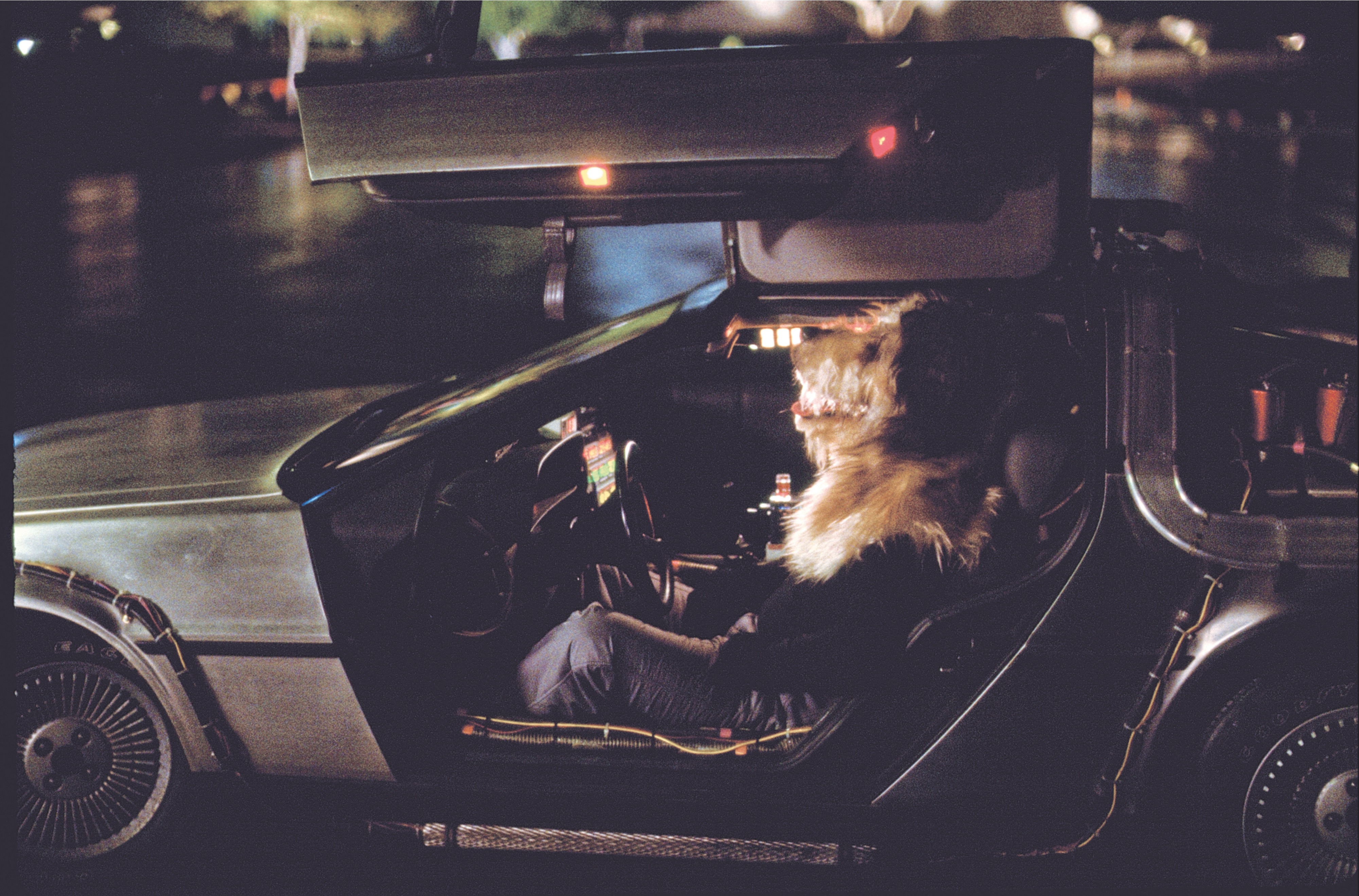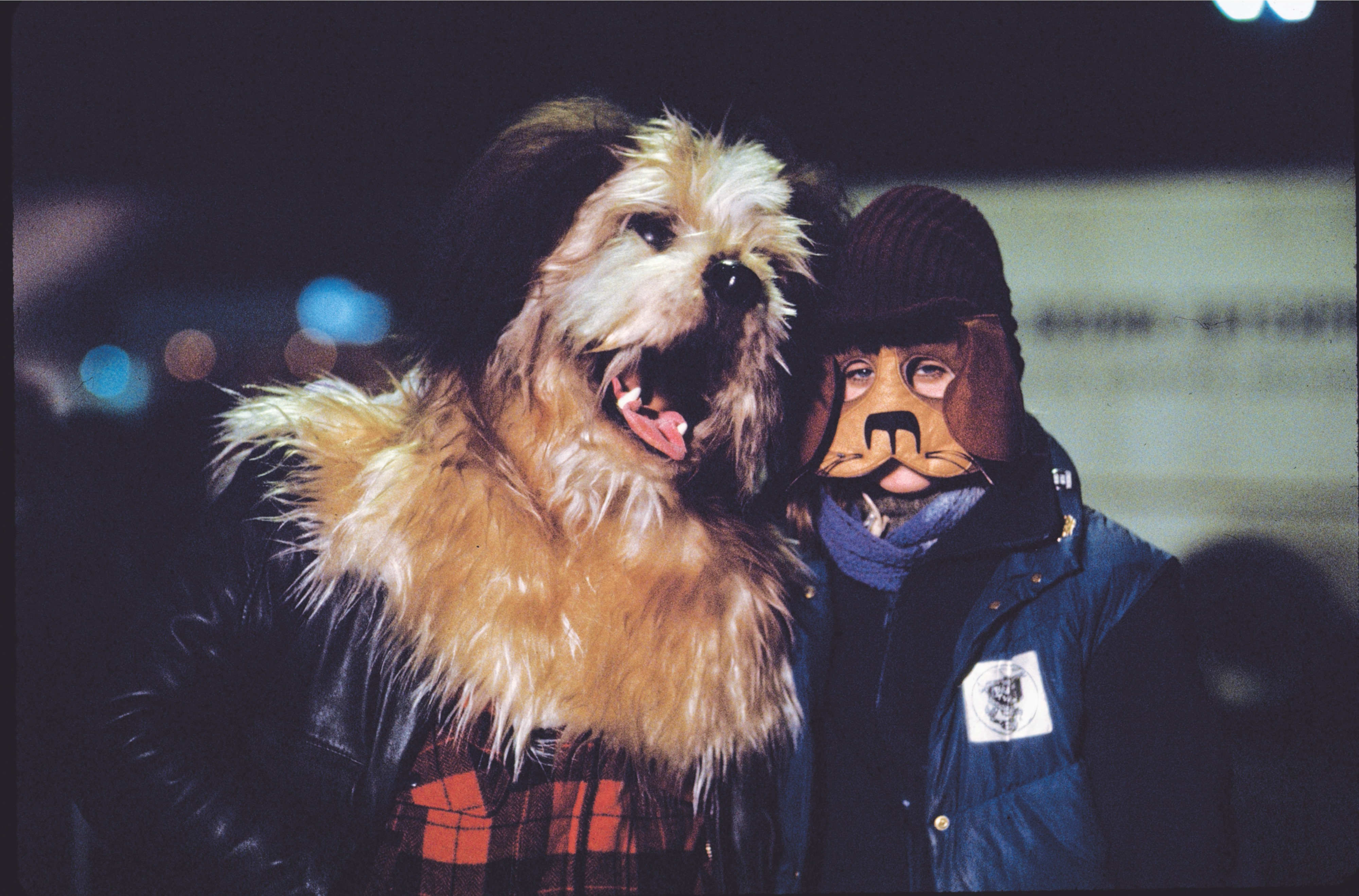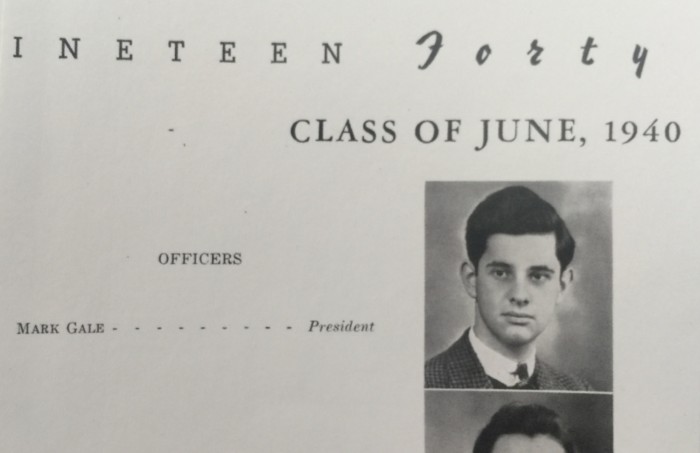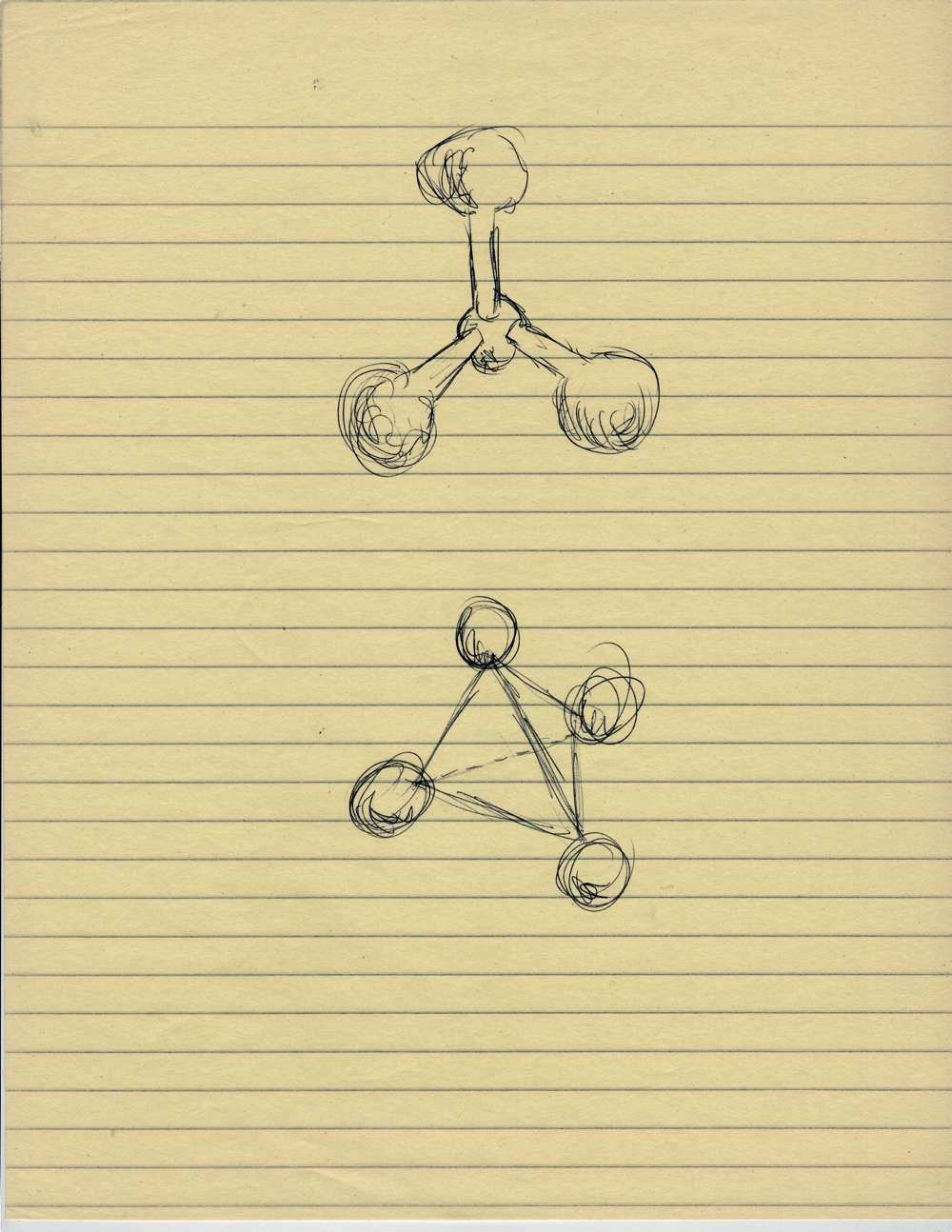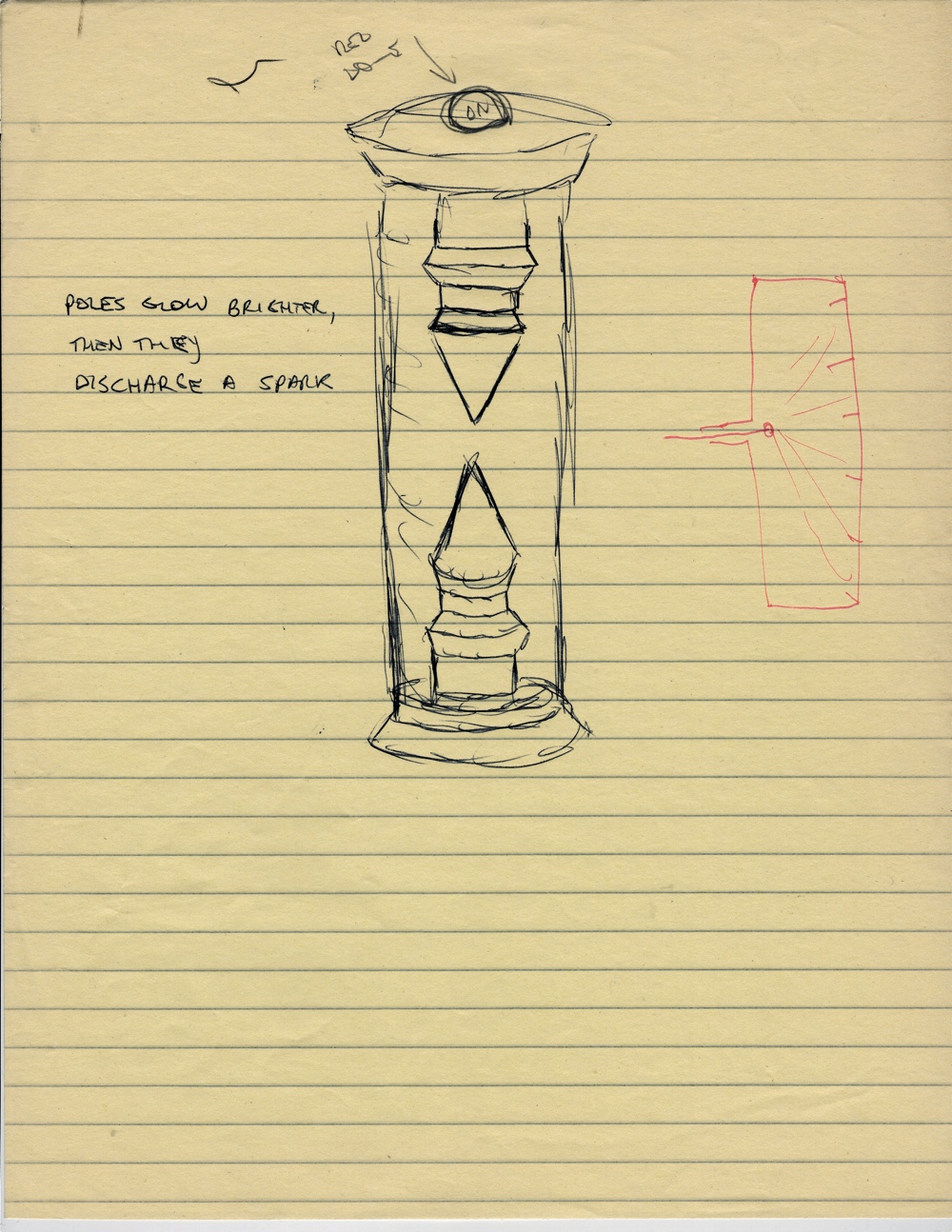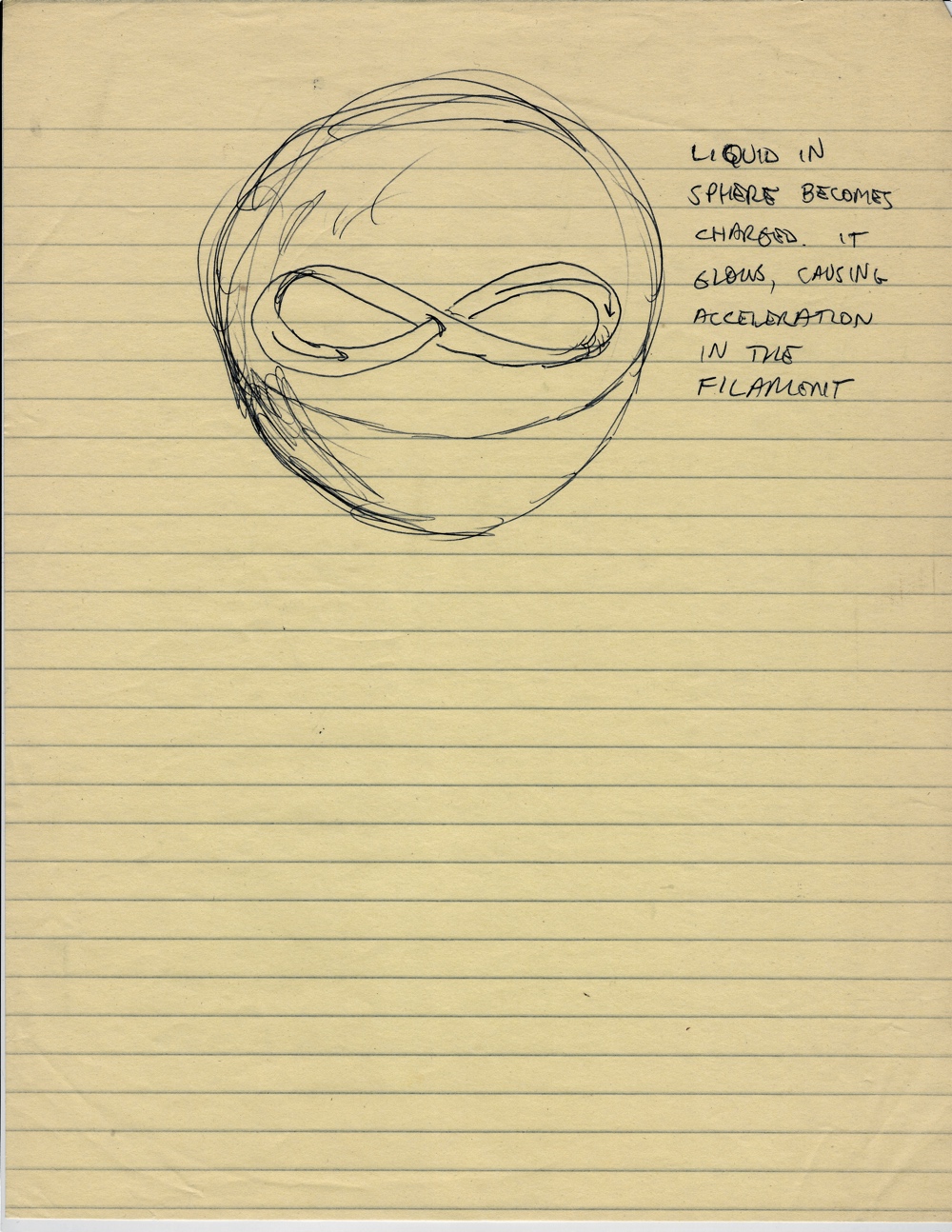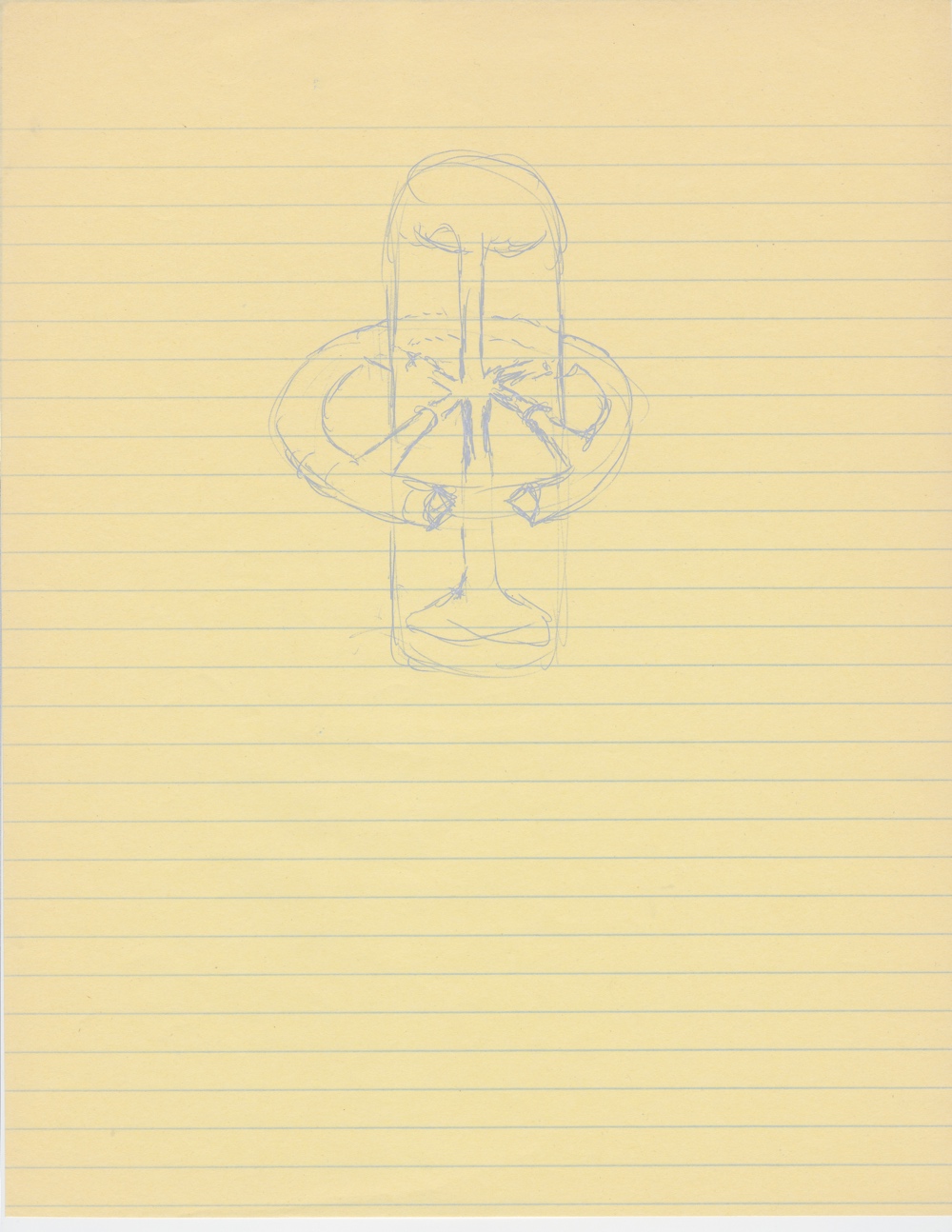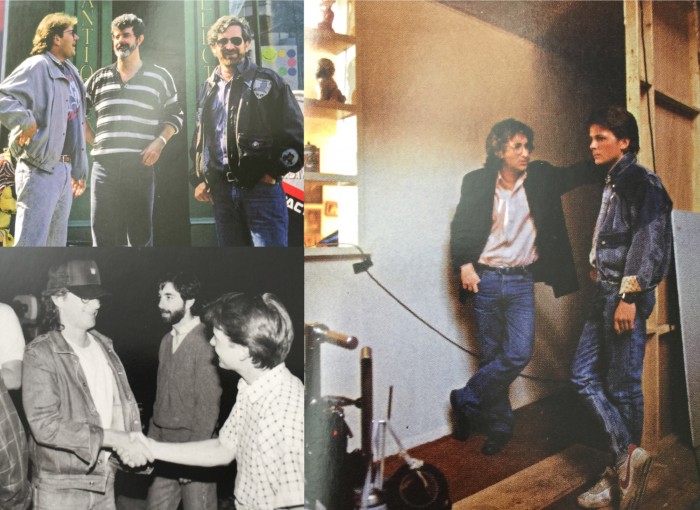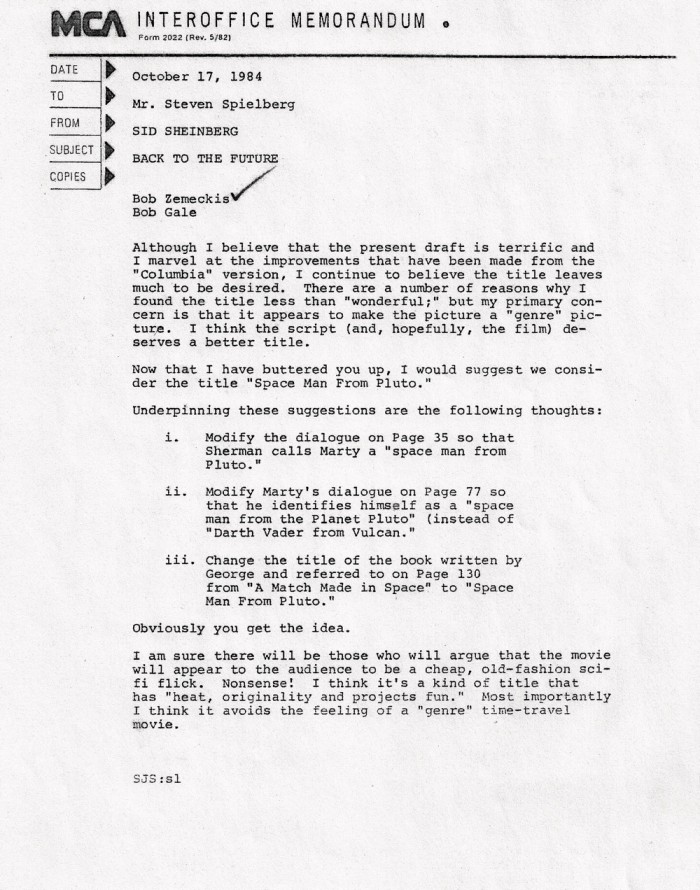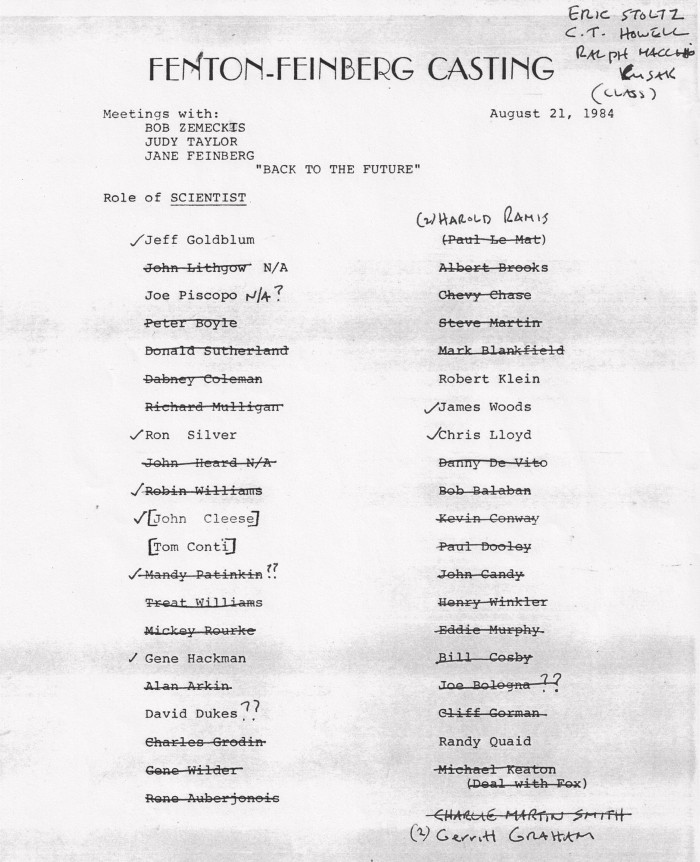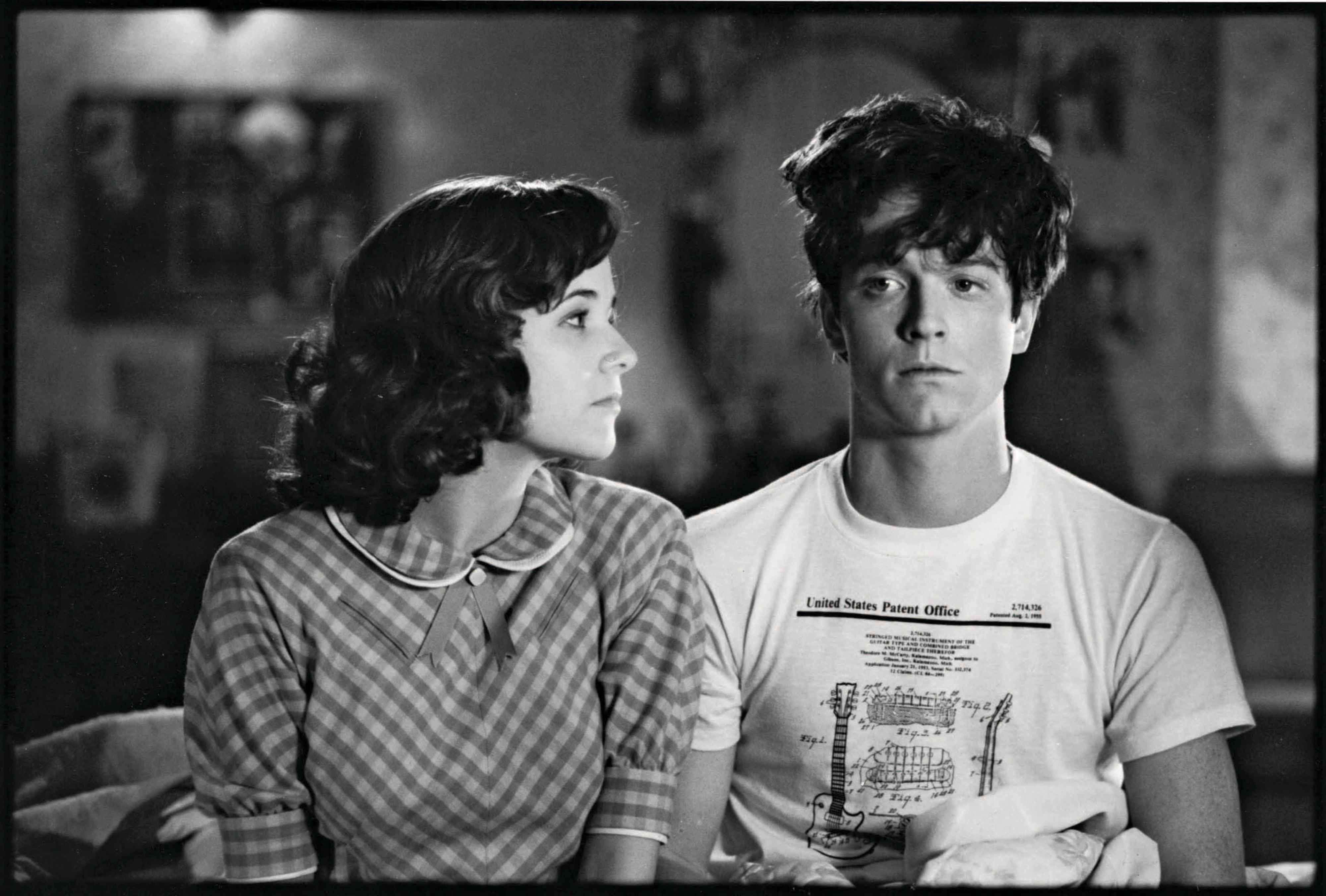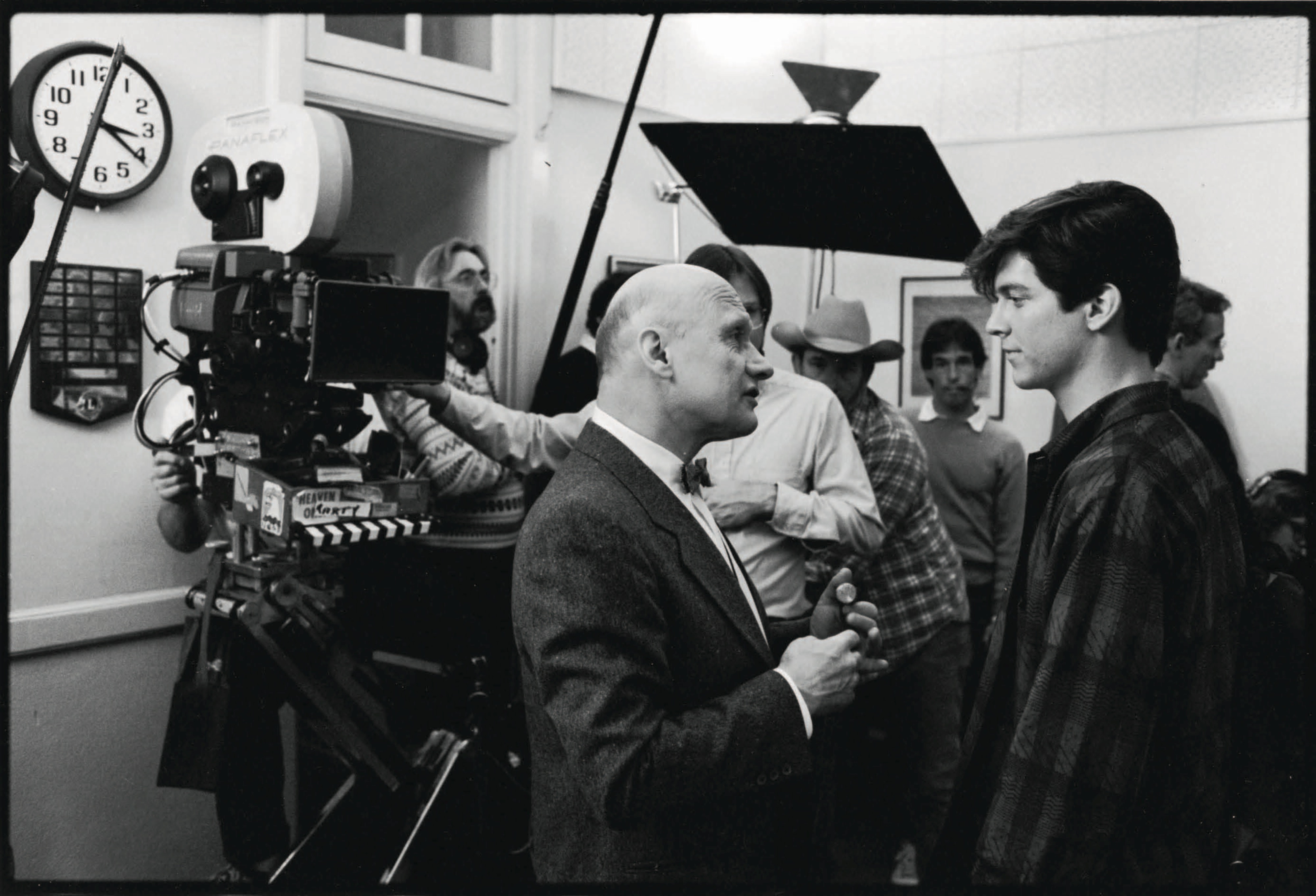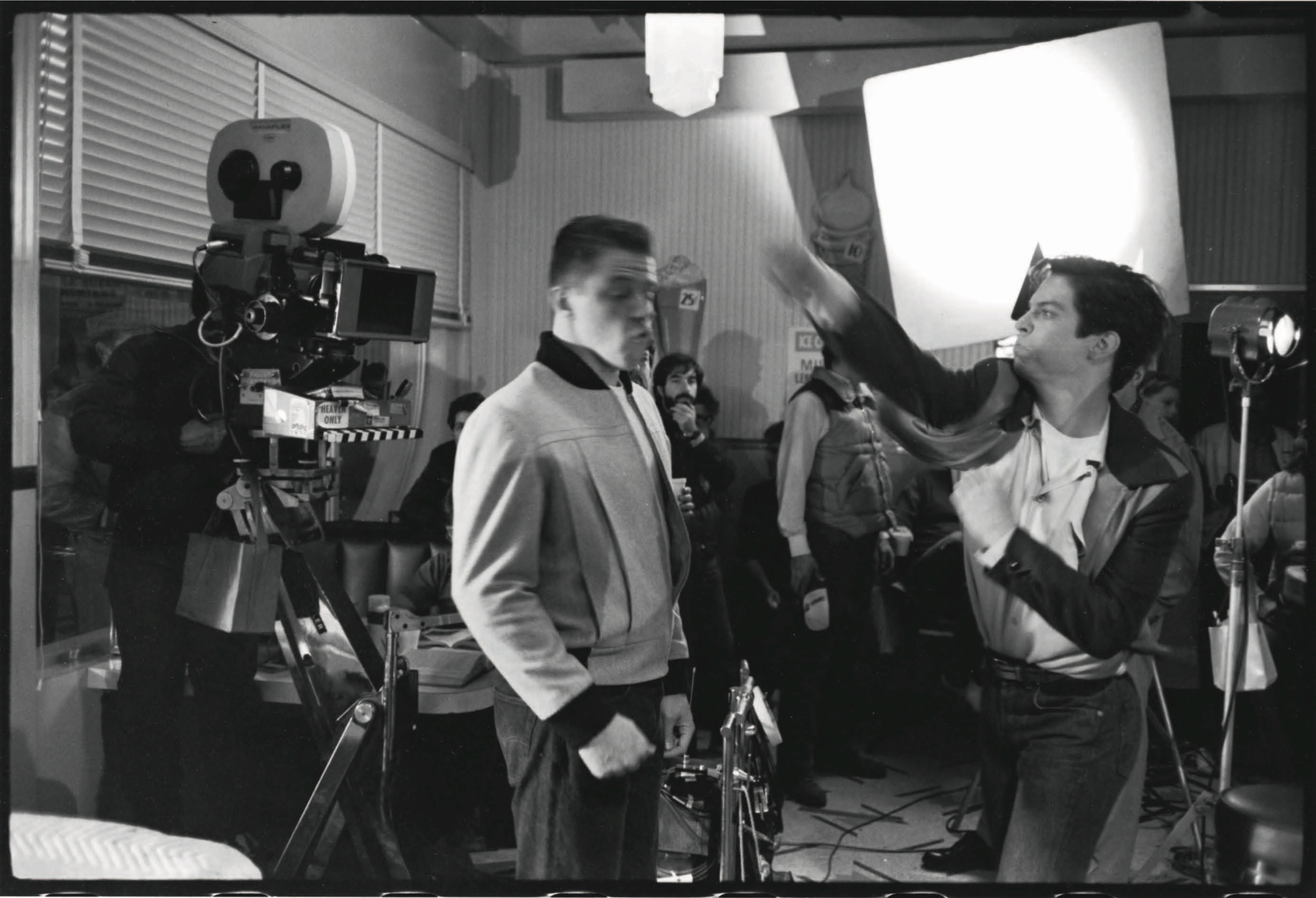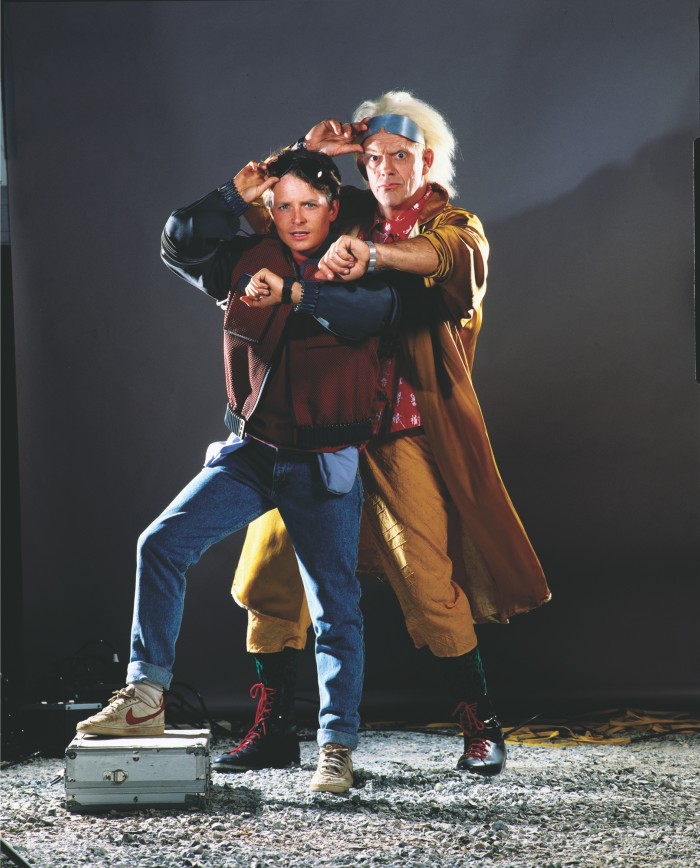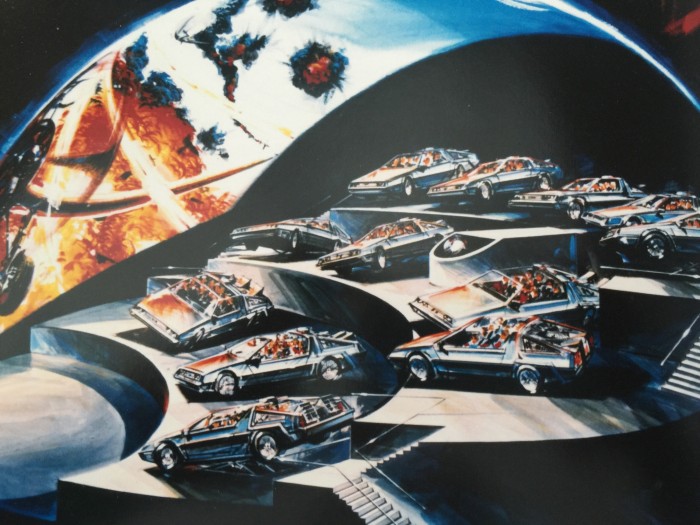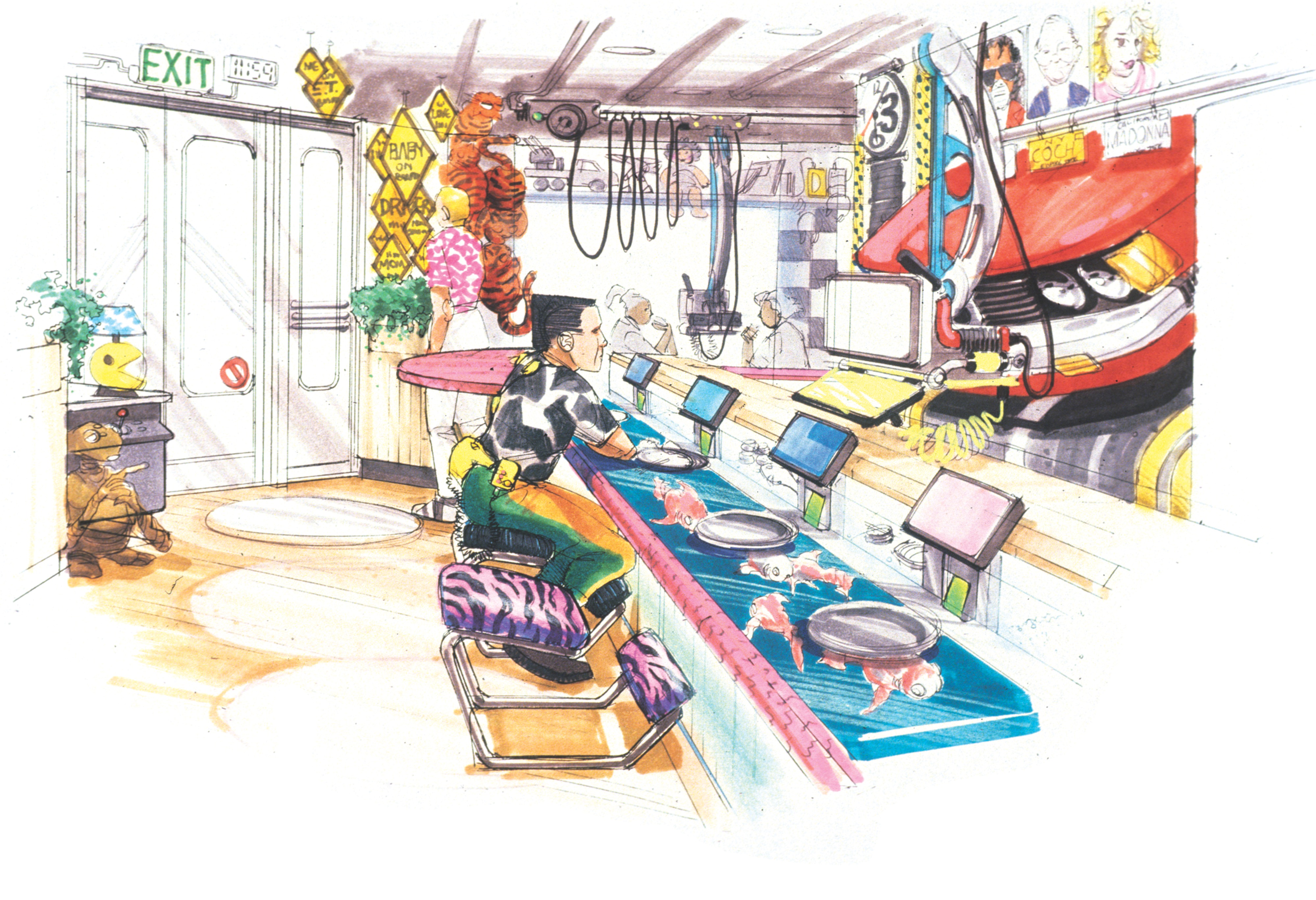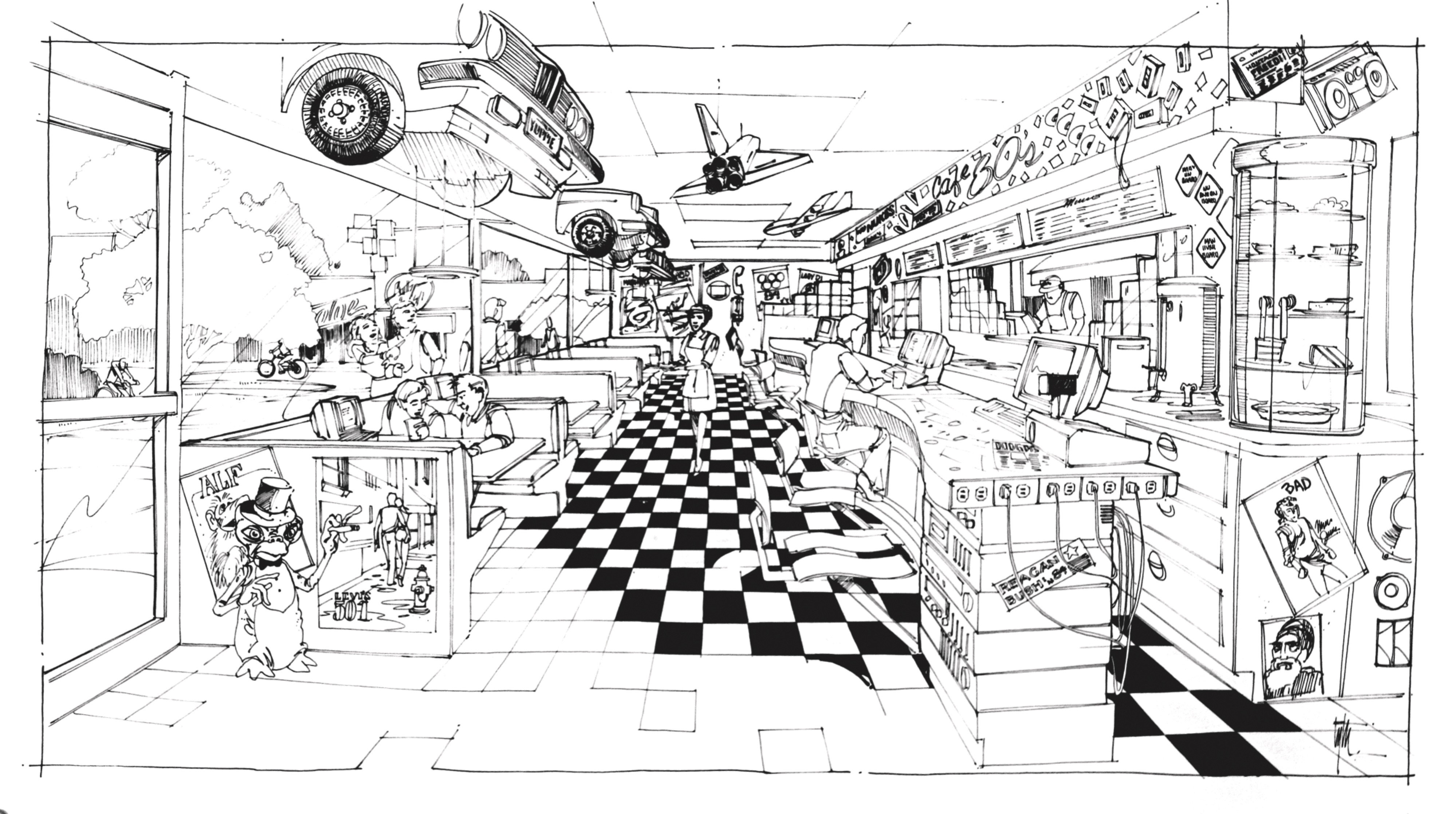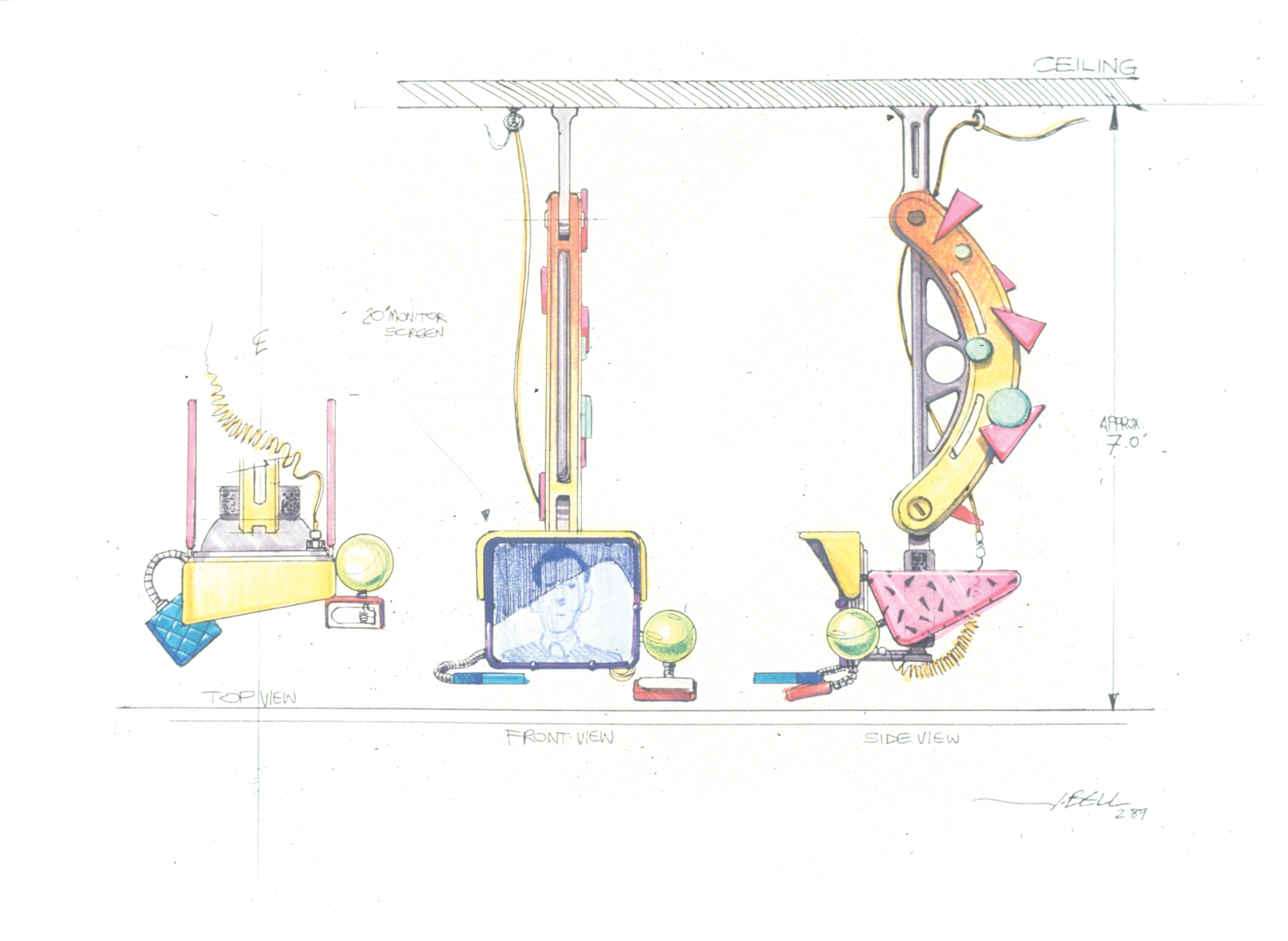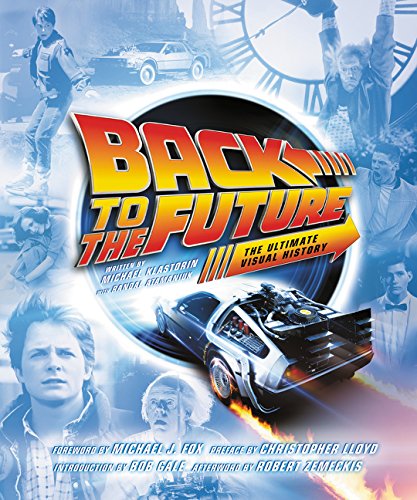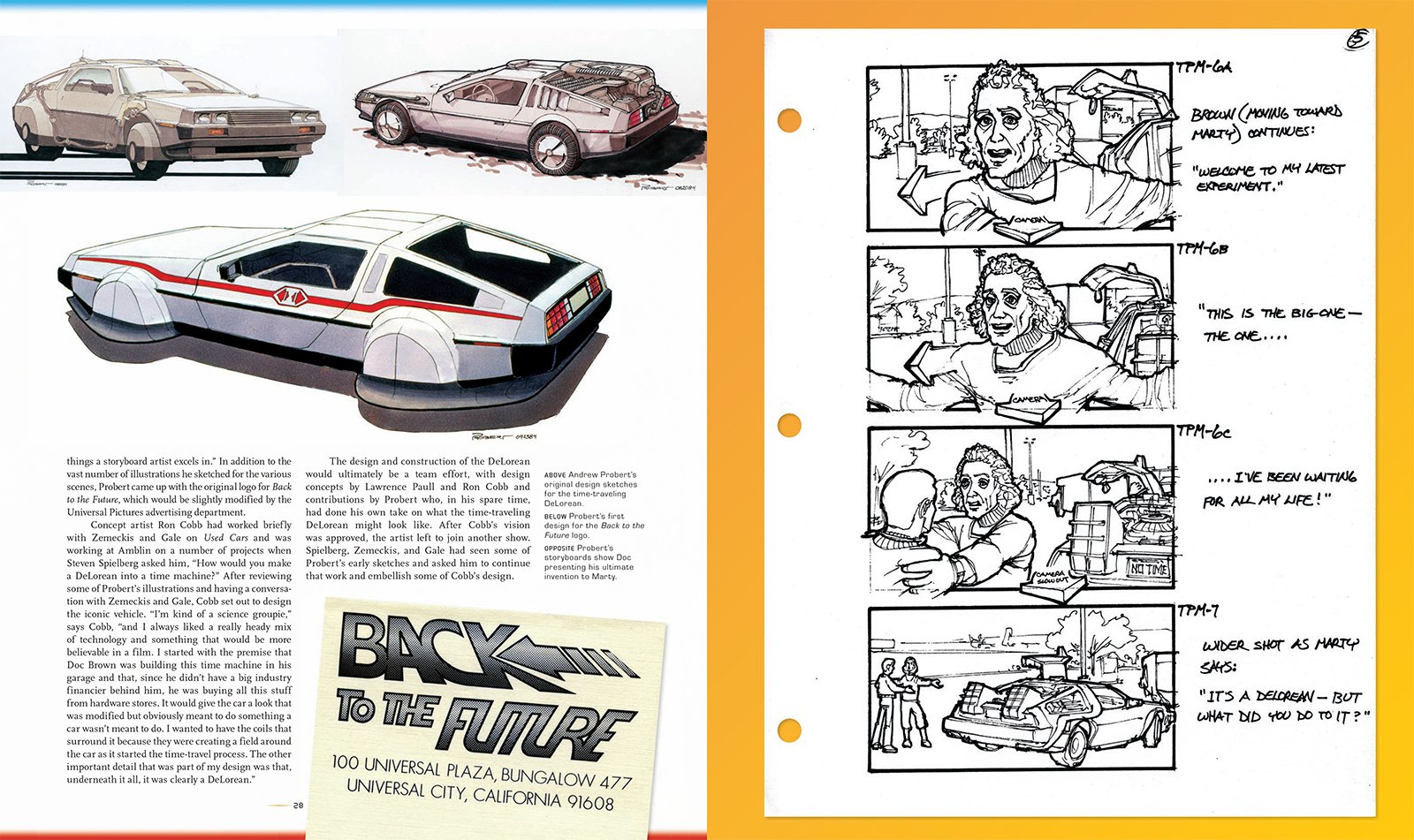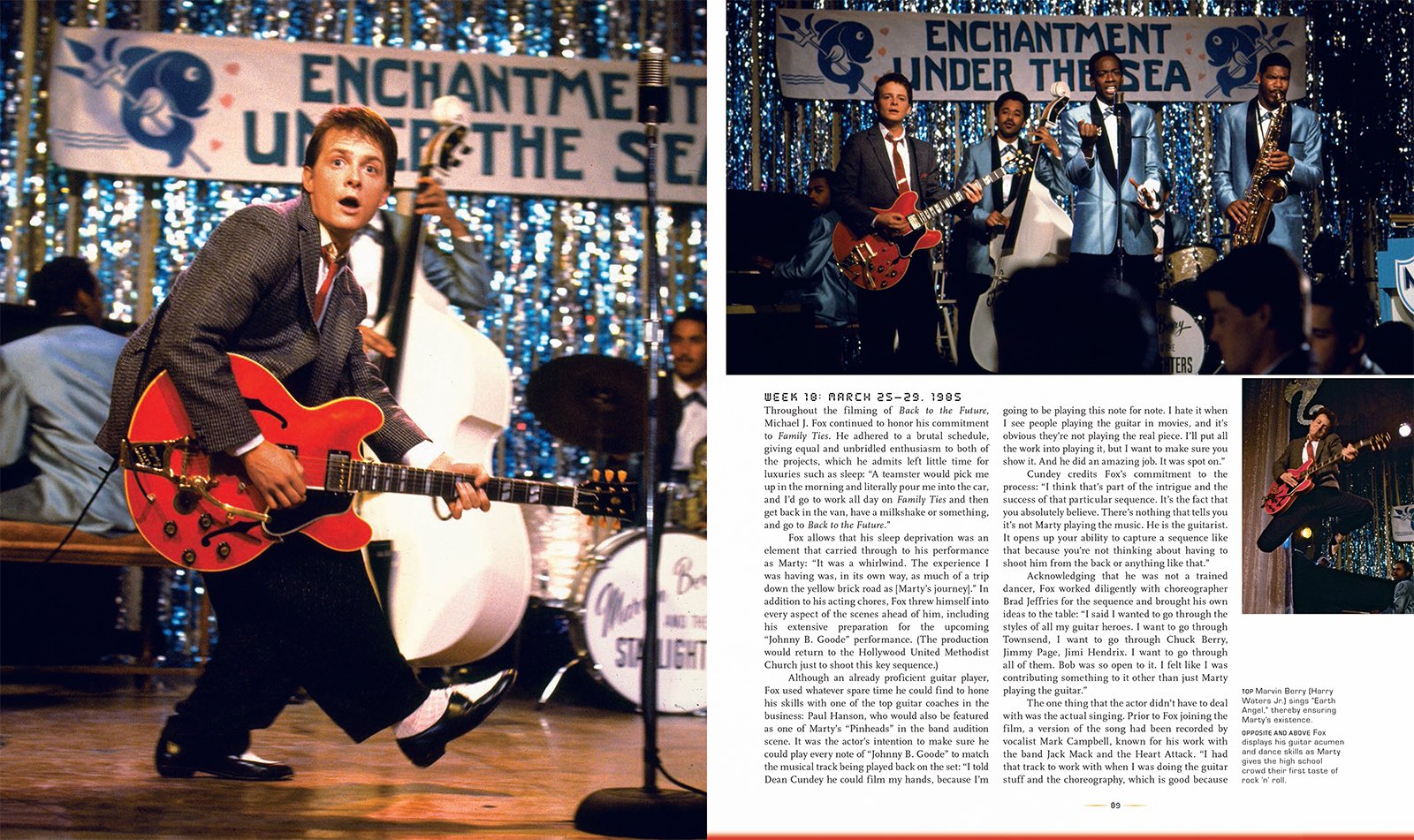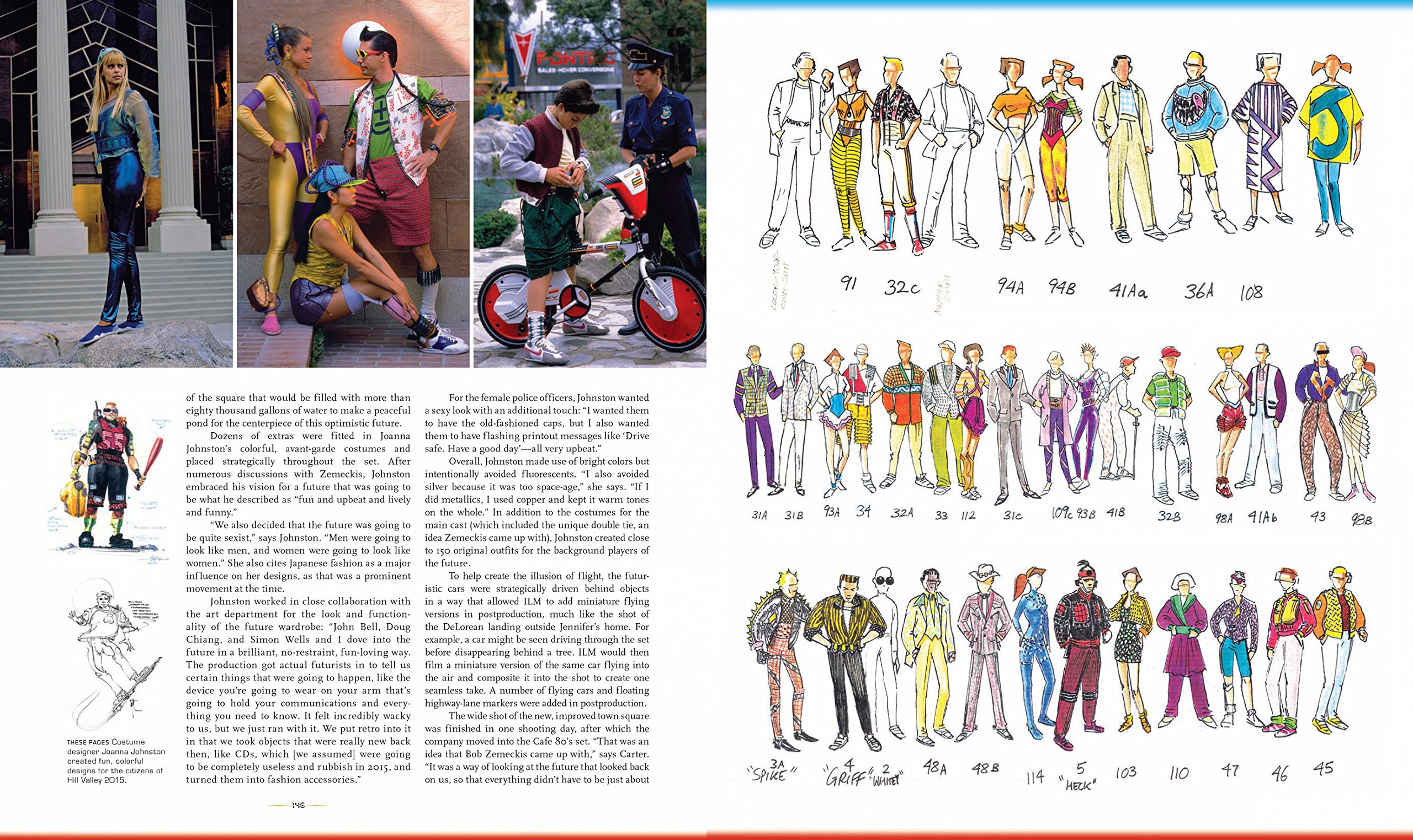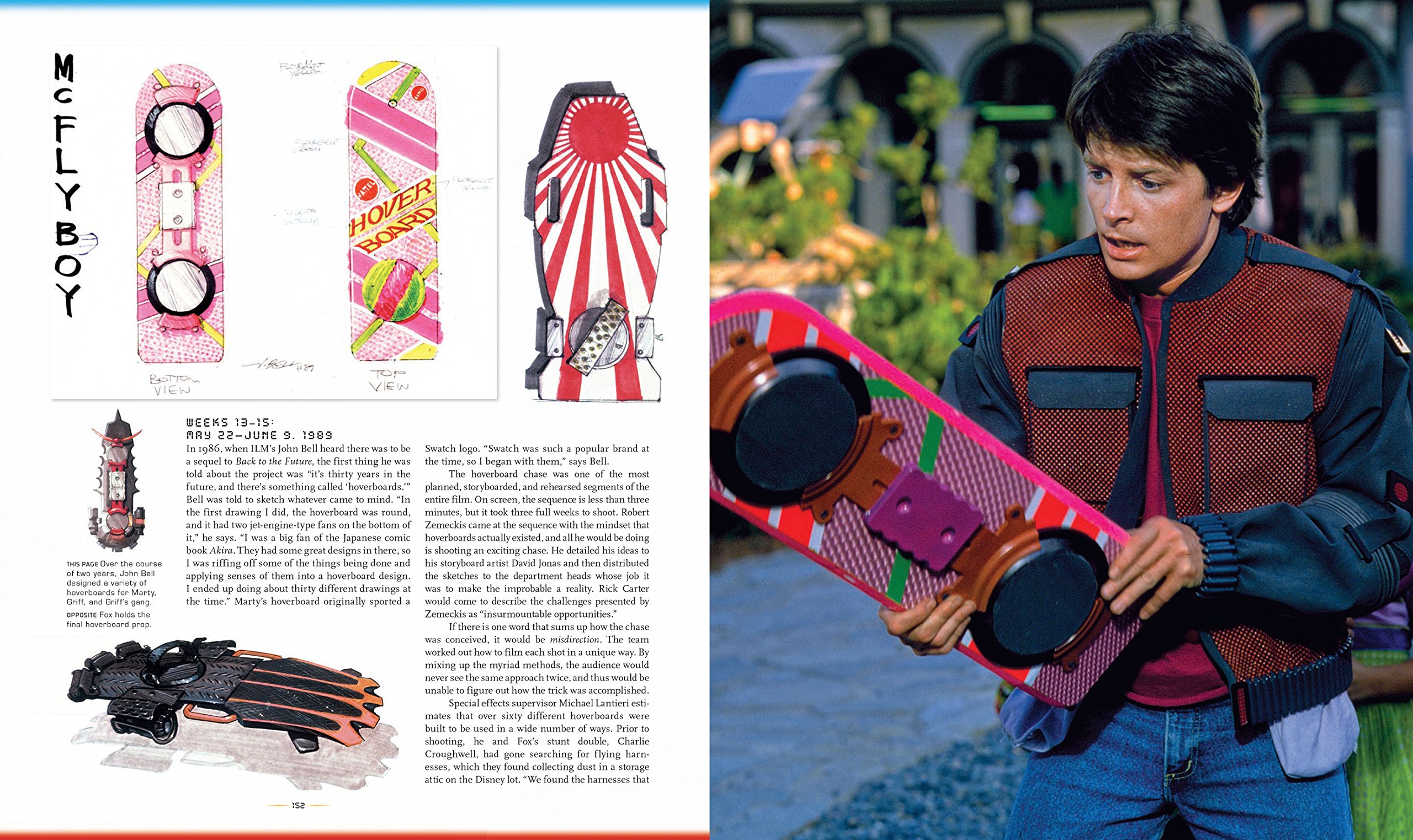11 Mind-Blowing Images In 'Back To The Future: The Ultimate Visual History'
We may receive a commission on purchases made from links.
The holy grail for most movie geeks is J. W. Rinzler's The Making of Star Wars and Indiana Jones books, which offer in-depth looks at the making of some of the greatest films of all time. But it's rare for films to get this kind of treatment, which is why it's so great to see that Michael Klastorin's Back to the Future: The Ultimate Visual History does just that.
If you are a Back to the Future fan, this book will blow you away. I'm a hardcore obsessive who thought I knew and saw everything having to do with the film, but almost every other page of this book had a quote or an image that I had never seen before. To help promote the book's release this week, I thought I'd take a look at the 11 coolest things I found in this book. Hit the jump to go 88mph and see some never-before-seen photos from behind the scenes of Back to the Future. And by the way, you can order the book now on Amazon.
Einstein's Stunt Driver
I've seen Back to the Future over a thousand times in my lifetime — it's my favorite movie of all time. But for whatever reason, I never knew how they accomplished the scene where Doc Brown remotely controls the time machine with Einstein in the driver's seat. When I was younger, I just assumed they created a remote control rig for the sequences where you could see the dog. As I got older, I just assumed a driver was hidden either in the passenger's seat or below in some cavity, as has been accomplished in other films (if you've ever seen the car stunt show at Disney Hollywood Studios, they demonstrate a similar rig).
Well, it seems I was wrong on both accounts. The book reveals a couple photos, one seen above, of stuntman Dick Butler donning a full-sized dog costume to take the wheel during the sequence. The scene was actually also Michael J. Fox's first day on set, and the book reveals that the remote control prop needed to be replaced with a stand-by duplicate, as Christopher Lloyd snapped off a switch when he was putting a little too much energy in his performance.
The Yearbook Photo That Started It All
Okay, so most people probably won't be impressed by this one. But having heard the story of Back to the Future's origin many times over the year, I was shocked to see this document. This is the yearbook page that inspired the movie. Director Robert Zemeckis and writer Bob Gale had been toying around with the idea of a time-travel movie since 1975. They liked the idea of going back in time and changing something that would drastically change the future that they returned to. The idea started more like Tomorrowland than it did Back to the Future:
We got to talking about the General Motors Futurama exhibit at the 1964 World's Fair and the Norman Bel Geddes future that was depicted at the 1939 World's Fair. Why didn't we ever get the future we were promised? So we thought it would be cool to make a movie where that actually became the future. And I got a title in my head: "Professor Brown Visits The Future." No story, just a title. We didn't come up with the hook until much later.
The hook infamously came in the summer of 1980, when Bob Gale was looking through his parents' high school yearbook and stopped to wonder if he and his father would have been friends if they had met in high school. Gale and Zemeckis spent a few weeks constructing a basic outline, and this idea was the genesis for Back to the Future. So to see the yearbook photo that inspired everything is kind of incredible.
Author Klastorin, who was actually a unit publicist on the Back to the Future sequels, told me how he got such incredible material:
Everyone was incredibly generous in sharing what they've kept over the years, starting with Robert Zemeckis and Bob Gale. Happily, so many people had kept so much of their original drawings, sketches, blueprints, storyboards, memos and so on, that I was overwhelmed with the amazing amount of incredible materials I had at my disposal. The actual yearbook we took the picture from came from Stephen Clark, who has been part of the Back to the Future family ever since he started a fan club for the films in 1990. I talk about Stephen in the 'Into The Future' chapter on page 220.
The Original Designs for the Flux Capacitor
Above you can see three of four original designs sketched by Back to the Future screenwriter Bob Gale for Doc Brown's famous time-travel device. The Flux Capacitor has become one of the most iconic props in movie history, and it started here on a few sheets of yellow lined paper. Klastorin told me that Gale pretty much kept everything, which is why we have some of this great developmental material still today.
Set Visits: Steven Spielberg and George Lucas
Seeing as Steven Spielberg produced Back to the Future, it's no big surprise that he visited the set during filming. But I'm a Spielberg fanatic, so I'm always interested in his involvement in the projects he produces. The book features a bunch of photos of Spielberg on set. Above you can see him alongside George Lucas visiting Robert Zemeckis on the 2015 future Hill Valley set of Back to the Future Part II. Below that you can see a photo of Steven welcoming Michael J. Fox on his first day on the production. And to the right you can see Spielberg chatting with Fox during a break in shooting on the 1985 McFly family house set.
Klastorin says that Spielberg made"sporadic visits to the sets on Part II, but he was also pretty busy with the release of Indiana Jones and the Last Crusade, which opened while we were shooting. And why wouldn't he want to share a cool set like that with his pal George?"
Sid Sheinberg's Infamous Memo
Steven Spielberg has been telling this story for years. Apparently Sid Sheinberg, head of Universal, didn't think that "Back to the Future" was a great title for the movie. He just didn't understand the title, as Marty was returning to the present, not the future. Sid had a different idea – call the movie "Space Man From Pluto," a reference to the comic book that old man Peabody's son references after Marty crashes the time machine into the barn. Here is how Gale told the story to Empire:
Every single person at Universal loved the title Back to the Future except for Sid. So we went to Steven and said, "Steven, what are we going to do? He means it. He really wants to change the title. And Steven wrote a memo back to Sheinberg saying, "Dear Sid, thanks so much for your most humorous memo. We all really got a big laugh out of it." Steven knew that Sid was too proud to admit he'd meant it seriously. And that was the end of Spaceman From Pluto.
It's never really been clear how true this story was, as I've heard Sheinberg denied it over the years, but Back to the Future: The Ultimate Visual History actually found the memo (its real!) and printed it in full.
Casting Suggestions for the Role of "Scientist"
It's hard to imagine anyone but Christopher Lloyd playing Doctor Emmet Brown now, but he was just one of many possibilities.
Above you can see a memo dated August 21st, 1984 from the casting agency of Mike Fenton and Jane Feinberg for the role of "the scientist." The list features more than forty options for the role that would become Doc Brown. Names on the list include Jeff Goldblum, John Cleese, Gene Hackman, Harold Ramis, Steve Martin, Chevy Chase, Eddie Murphy, Randy Quaid and Joe Piscopo. Apparently producer Neil Canton was the one who first suggested Lloyd alongside John Lithgow, both of whom he worked with on The Adventures of Buckaroo Banzai.
I love seeing lists like this from the early days of a project and imagining what could have been if any of these other actors had won the role. And to make things even crazier, there was a moment when Lloyd turned down the role. He "had trouble trying to make sense" of the early screenplay draft he was sent, told his agent he wouldn't audition for the role and chucked the screenplay in the trash. Apparently the actor was having doubts about his decision to leave New York where he had been working steadily as a theatre actor and had an offer to go back to New Haven and play Hans Christian Anderson in a play. It was Lloyd's wife who convinced him to meet with Zemeckis. Of course, upon meeting Robert, as Lloyd admits, "that was it."
The other great thing about this document is that the upper right hand of the page features handwritten notes for possibilities to play Marty McFly. The actors noted include Eric Stoltz (who actually got the part before being replaced by Michael J. Fox), C. Thomas Howell, Ralph Macchio, and "Kusak" which I think must be referencing John Cusack (who was 18 years old at the time). Klastorin explains:
It's a pretty standard process when a film gets a green light for the casting directors to break down the script and put together a long list of actors including everyone they think might be right for the lead roles. That's exactly how Mike Fenton and Jane Feinberg, along with casting associate Judy Taylor began. Not every actor on that memo was seen for the role of Doc. As I say in the book, the three main contenders were Jeff Goldblum, John Lithgow and Chris Lloyd.
In another memo in the book we see that Johnny Depp came in to read for the part of George McFly. Imagine that.
Photos of Eric Stoltz as Marty McFly
We all know the story. Eric Stoltz was originally cast as Marty McFly, and replaced by Michael J. Fox after Zemeckis and crew felt the performance wasn't right for the movie. They had shot almost six full weeks on the movie – almost halfway through production – before they decided to replace Stoltz in the film. Over the years we've seen some photos and even a little video footage of Stoltz in the original film, but we haven't seen much. Klastorin explains:
There have been a number of photos of Eric floating around the internet over the years, but I wanted to find some that people hadn't seen. The Motion Picture Academy library had a number of them, but it was at the Universal Studios archives where I hit the jackpot. I was handed several boxes containing literally thousands of negatives of every black and white photo taken on part one, by still photographer Ralph Nelson, Jr. Bob Gale and I sifted through every one of them. It was amazing to see all of those familiar scenes, but with Eric as Marty. I do think the most fun was watching Bob's reaction as he came upon images he hadn't seen for over 30 years.
Back to the Future: The Ultimate Visual History features almost 30 new photos of Eric Stoltz on set or in the film, most of which have never before been seen publicly.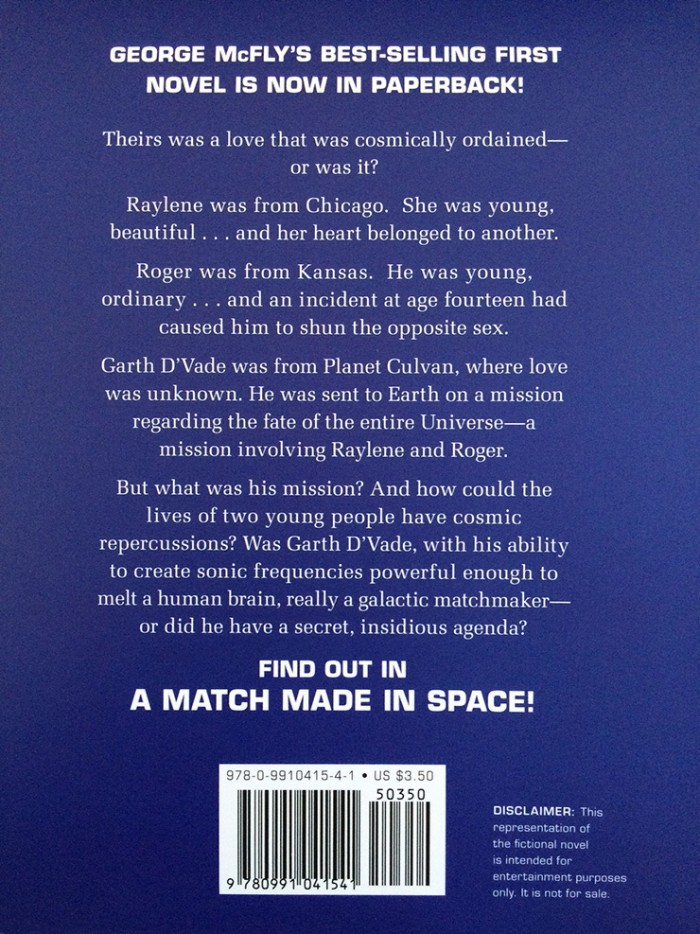
George McFly's Book: A Match Made in Space
One of the cool pull-outs included in the book is a book cover for the softcover edition of George McFly's novel A Match Made in Space. While the book cover art is the same art created by Andrew Probert for the hardcover prop seen in the first film, the back cover features the first-ever synopsis for the fictional book. Klastorin told me:
This was an idea to do something totally exclusive as an insert. Rather than just reproduce the cover to George's book as we see it in the film, we thought it would be fun to give readers the cover of what would be the paperback edition of "A Match Made In Space." Bob Gale wrote the blurb for the back cover which finally reveals the plot of the book!
That's right, Back to the Future screenwriter Bob Gale wrote the back cover synopsis just for this book.
Drew Struzan's Back to the Future Part II Photo
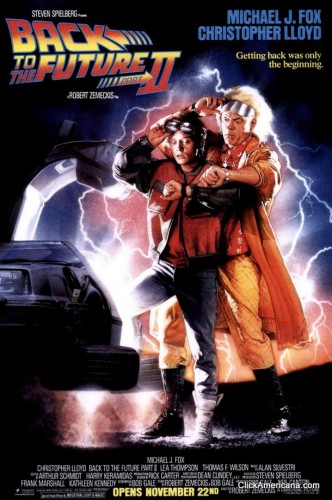 Here is something that I didn't even think existed until I found it in this book. Legendary poster artist Drew Struzan visited the set of Back to the Future Part III (remember, they shot the sequels back-to-back) to photograph Michael J. Fox and Christopher Lloyd in their costumes and poses for the Back to the Future Part II poster.
Here is something that I didn't even think existed until I found it in this book. Legendary poster artist Drew Struzan visited the set of Back to the Future Part III (remember, they shot the sequels back-to-back) to photograph Michael J. Fox and Christopher Lloyd in their costumes and poses for the Back to the Future Part II poster.
Klastorin explains the photo to me:
Having been left out of the photo shoot with Michael for the part one poster, Drew wanted to make sure the same thing wouldn't happen for Part II. He traveled to the set of III in northern California, and after the shooting day was done, we set up a makeshift photo studio where Michael and Chris got back into their 2015 wardrobe, and happily posed for him.
Back to the Future: The Ride Concept Art
Most of this feature has been dedicated to the original 1985 Back to the Future film, but more than half the book is devoted to the sequels, the animated series, the theme park ride and more. There is so much good stuff in this book, there is no way to properly highlight it all here. But I'm a big fan of the Universal Studios theme park ride (sadly, replaced in the domestic parks with The Simpsons ride), so I wanted to feature this piece of concept art created by Greg MacGillivray for the original ride proposal.
Apparently in the spring of 1988, the Universal team led by Peter Alexander and producer Phil Hettema set up a prototype of the ride in a decommissioned Omnimax theater to sell the idea to the studio. The prototype even has a vehicle on a motion base.
MacGillivray was hired to direct the ride because of his experience working on IMAX films. He shot a short demo film with special effects artist Richard Edlund (Star Wars, Indiana Jones) which was apparently awful. The original idea was more like flying through the world of the Back to the Future films, and Bob Gale (who wasn't officially involved in the ride) was appalled, calling it "absolutely terrible." Aside from the concept not working, the initial test films were making riders sick. Universal eventually hired Douglas Trumbull to direct a new version of the story and invent a motion control rig which would fix the rider sickness issues.
The Original Cafe 80's Concept Art
Okay, so these pieces of Cafe 80's concept art might not be mind-blowing, but they are just cool. It's interesting to see how the idea for a futuristic '50s-style cafe evolved into what it turned out to be in the film. Ed Eyth did the sketch, while John Bell did the colored versions to the right. According to the book, the idea for the Cafe 80's came from director Robert Zemeckis, but I've heard writer Bob Gale talk many times about how he envisioned that the people of 2015 would be nostalgic for an era 30 years earlier.
Apparently the exercise bikes in the cafe came from an earlier draft where the safe was attached to a health club (remember, Lou's Cafe turned into Lou's Aerobic Fitness Center by the year 1985, so the idea was a bit of a mash-up). In the original draft, Griff and Marty (posing as his son) were engaged in the futuristic sport of slamball (described as a mash-up of handball and jai alai) in an antigravity chamber. However, the sequence was considered too costly and time-consuming and was cut from the script.
This book talks to almost everyone involved in the Back to the Future series. They even have quotes from Elijah Wood, who had his screen debut as "Video Arcade Boy 1" in this sequence.
Back to the Future: The Ultimate Visual History is one of the best behind the scenes books ever published (if you are a fan of the series, you should buy it right now), and not just because of all the images. Klastorin goes through all the events of development and filming in chronological order, giving you in-depth accounts of everything from almost everyone involved in the series.
On top of that, it also gives fans a lot of extra added value through inserted pullout material like prop replicas of the Save the Clock Tower flyer, Doc Brown's Flux Capacitor drawing, a recreation of the Jaws 19 poster that was hanging in the 2015 Hill Valley movie theater window, and this super cool lenticular photo that shows you Marty McFly's brother and sister disappear. I Instagrammed a video of it a few weeks back:

